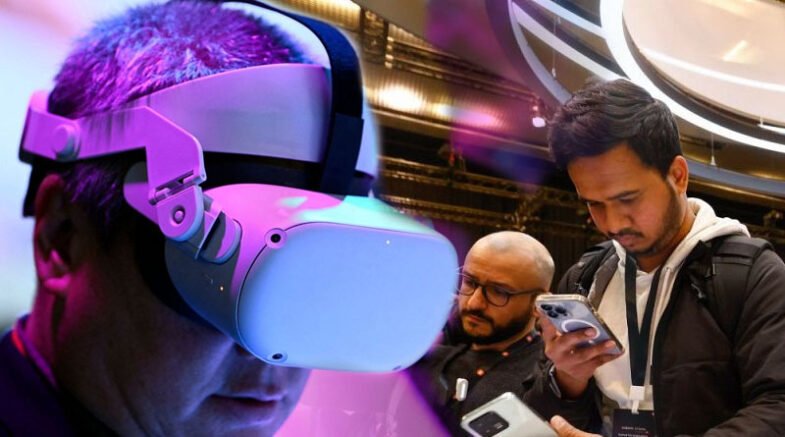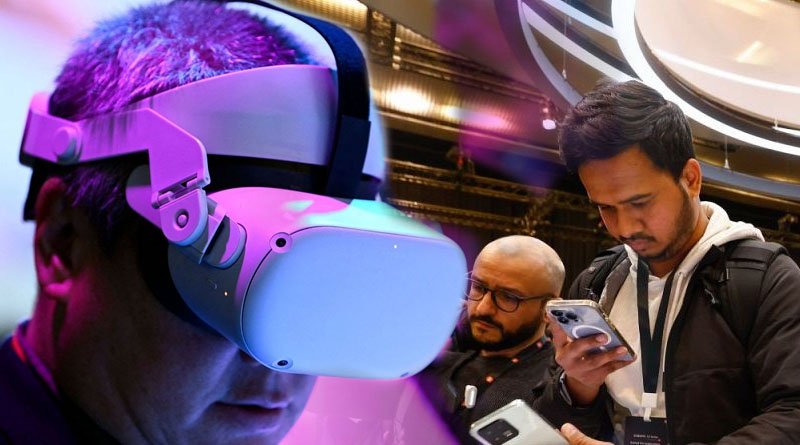The four-day event is the largest and most important gathering of the phone tech industry in the world and is held in a sizable conference centre in Barcelona.

The annual Mobile World Congress (MWC) trade show got underway on Monday, bringing together top figures in the mobile and telecommunications industries to present their latest product innovations and talk about the direction of technology.
The four-day event is the largest and most important gathering of the phone tech industry in the world and is held in a sizable conference centre in Barcelona. On Monday, Nokia unveiled its “self-fix phone”—one of the first low-cost Android smartphones intended for in-home repairs.
Customers will be able to perform quick fixes themselves with the help of the technology, which has been introduced to the market in collaboration with iFixit, such as changing out worn-out batteries or cracked display screens.
With an enviable lifespan for customers, Nokia and its parent company, HMD Global, hope the phone will appeal to a market looking to save time and money with their next investment. The OnePlus 11 concept phone, which uses the brand-new Active CryoFlux cooling system, has been unveiled by OnePlus.
The phone appears to have coloured stripes running along its back from the outside. The fluid that is being circulated inside the phone by the ceramic piezoelectric micropump is actually this.
The reason? It can increase handset performance and longevity and speed up charging, much like cooling systems you might find on a PC. When Motorola unveiled a phone with a roll-out screen, it upped the ante. The display will automatically unscroll from the bottom and grow from 5 inches (13 cm) to 6.5 inches when you double tap it on the side.
Lenovo showed off a laptop with a rolling screen that took about 19 seconds to unscroll to its fully extended position. Other brands, including Samsung and China’s Oppo and Tecno, also released their latest folding designs. Xiaomi’s 13 and 13 Pro have taken the global stage at MWC, with Germany, France, Spain, and Italy being the first markets to introduce Android smartphones with Leica cameras and Snapdragon 8 Gen 2.
Xiaomi’s Honor Magic5 series has taken the top spot for camera and screen tech in the DXOMARK Global Smartphone Ranking, with a rounded design and a 100-degree, 12MP selfie function. The 1312 x 2848 pixel screen can peak at 1800 brightness. Xiaomi also debuted a prototype pair of AR glasses with XDA at MWC.
The Motorola Defy Satellite Link is a new accessory that allows smartphones to send and receive text messages even if there is no signal. It is ideal for those who love exploring the remote outdoors and can provide SOS signals and location sending even if the smartphone it’s paired to has run out of power. It means people won’t need to buy an entirely new phone to benefit from the evolving power of off-radar communication.
Realme’s 240W phone can charge to 100% in nine and a half minutes, while Redmi’s 300W charger can fuel a phone to half capacity in two minutes and full capacity in five. D-ID, an Israeli startup, has launched a new interface for its “digital human” to work with AI-chat systems.
“The chatbot was previously available. They didn’t function. Because they could only respond to specific questions with specific answers, said CEO Gil Perry. Large language models are now making a significant improvement over conventional chatbots.
Perry gave an example by asking the chatbot’s face on his laptop a question, to which the response was startlingly realistic. He claimed that security measures would prevent D-technology IDs from being misused.
Huawei has been dominating annual Mobile World Congress this year with its GT Cyber watch, boasting military-level durability, water resistance to 50m, over 100 workout modes, and sleep technology. Oppo’s health monitor looks like an old-school computer mouse, but it is as close to having a live-in doctor as you can get.
XRAI (pronounced X-ray) is a device that measures six biometrics and uses AI to diagnose medical problems and provide suggested treatments.
It also has a virtual assistant app that works with smart viewer glasses to help people who are deaf or hard of hearing better understand what’s happening around them. Now XRAI has integrated OpenAI’s ChatGPT technology into its app and glasses setup, allowing people to ask questions such as general knowledge or recipes.
Amdocs demonstrated AR technology that could be used for both fans and security staff at big-ticket sports games, including exclusive replay videos and live stats. For those with hearing loss, it can be helpful to have an AI assistant recap a conversation in which multiple people were talking.
The same glasses could also be used as an extra tool for security staff at the game, with additional safety features including a security database.
